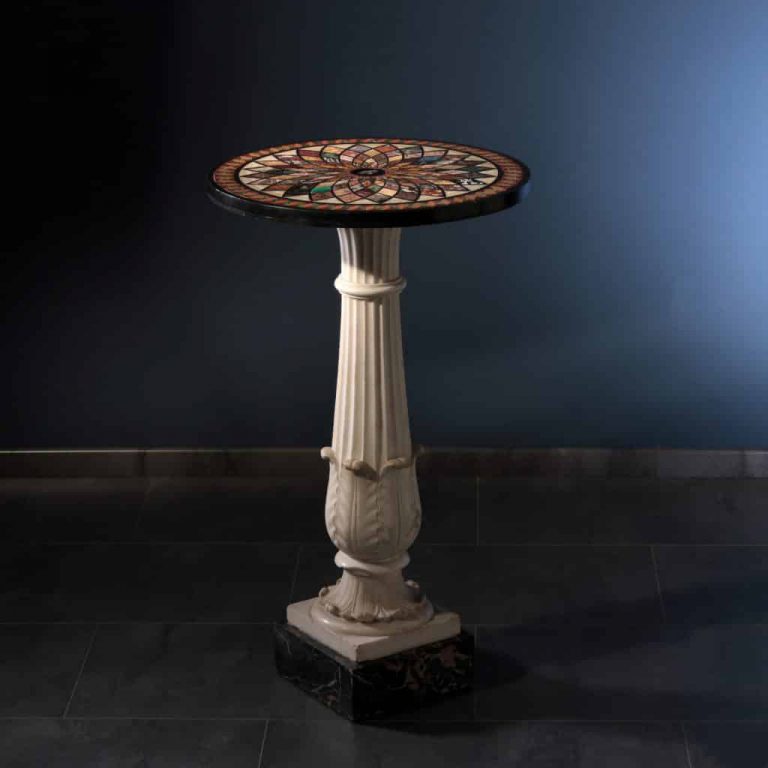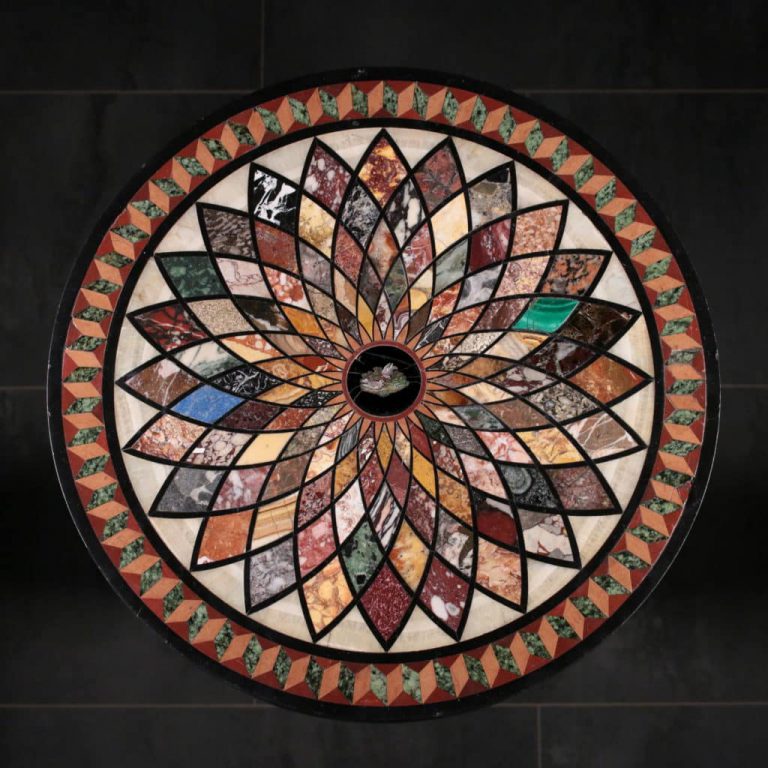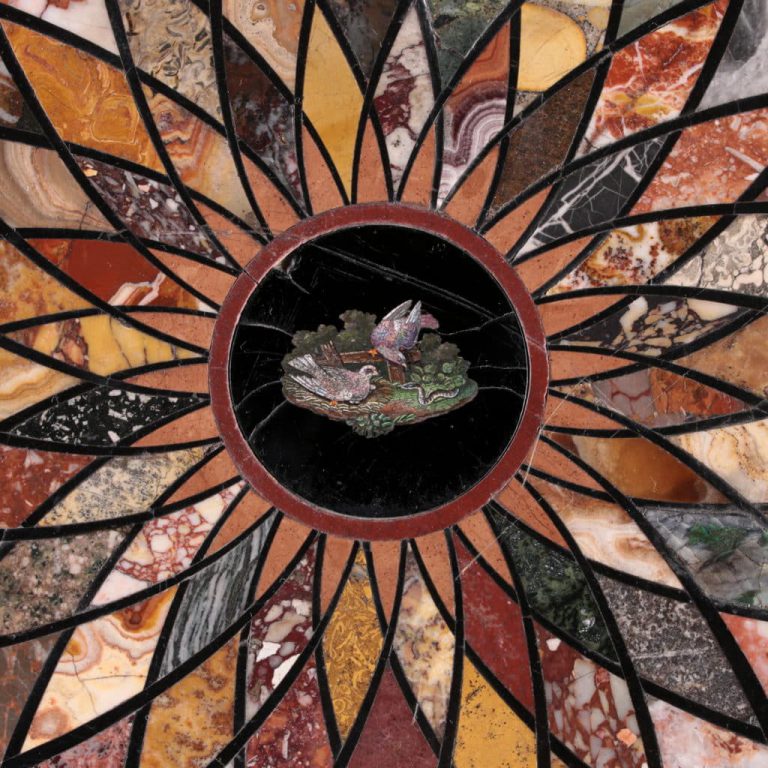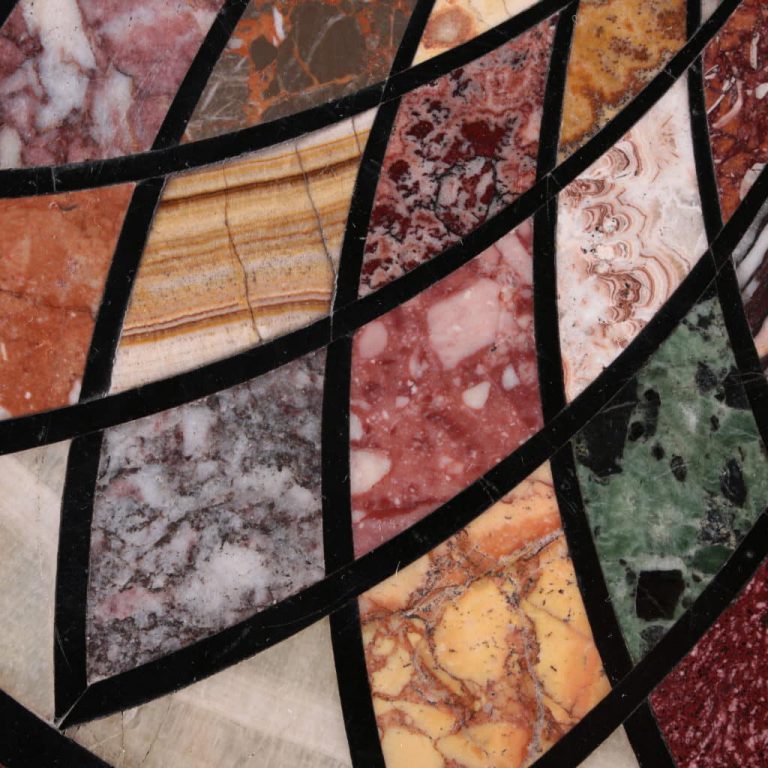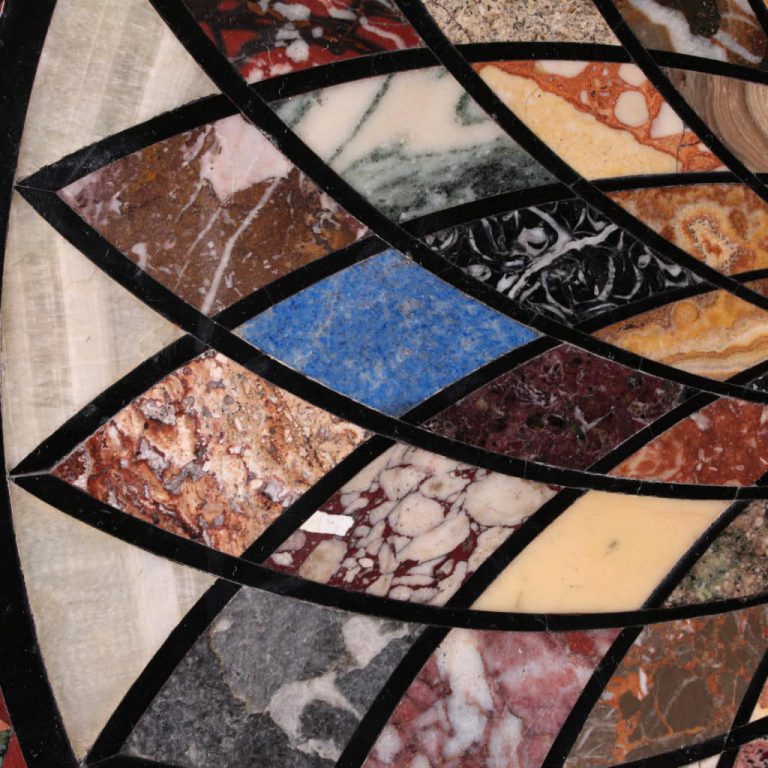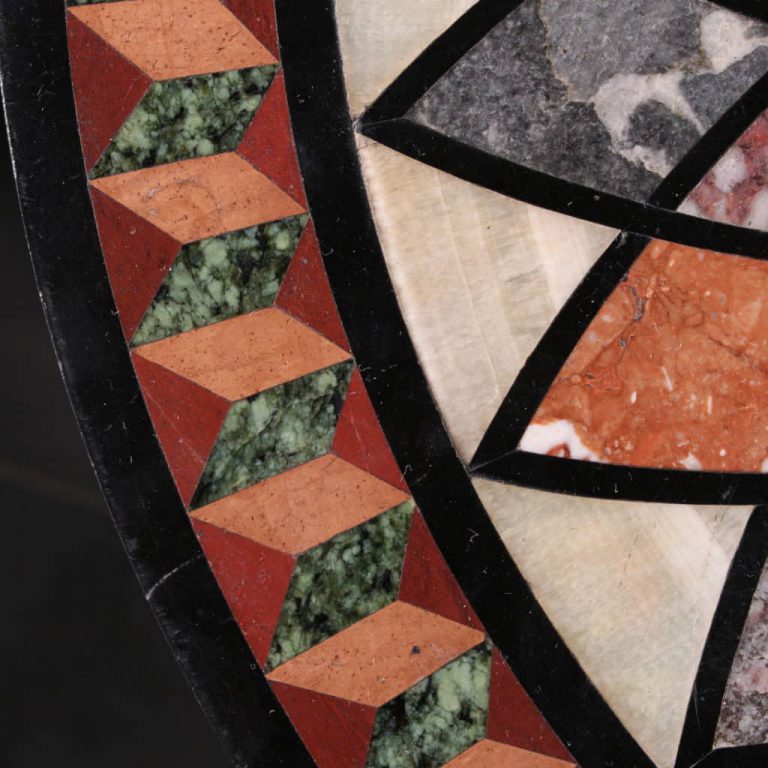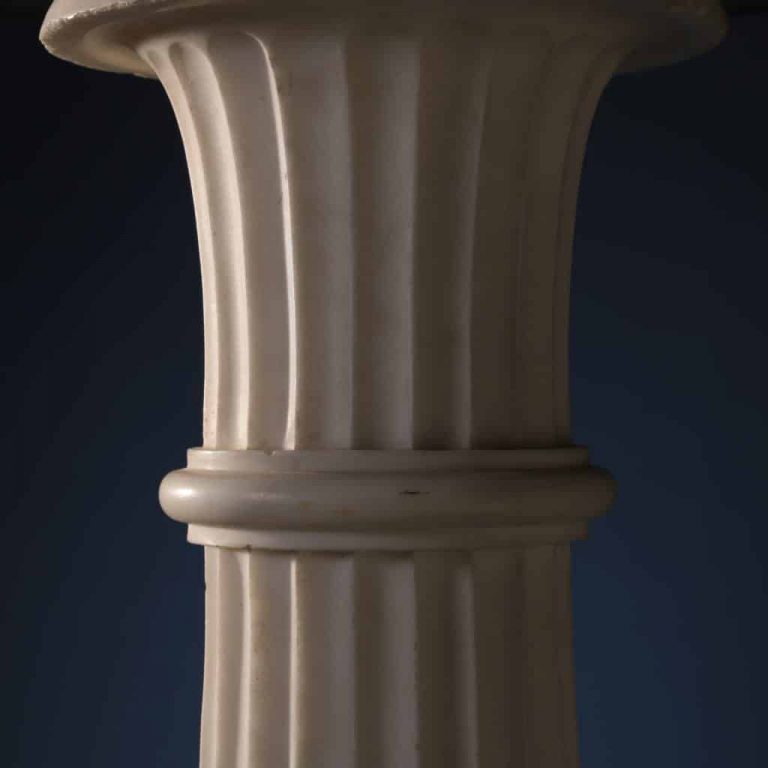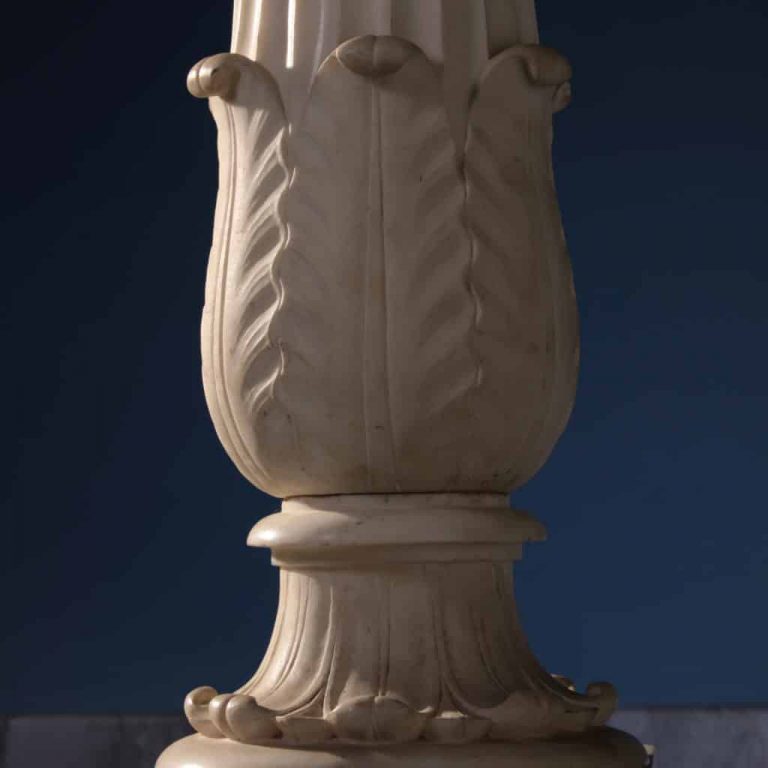Roma, Opificio Raffaelli
Description:
Sample table with circular top in black marble with a collection of 120 marbles and semiprecious stones to which the four marbles used for the decorative parts must be added.
In the center, a round decoration in Belgian black marble encloses a micro mosaic depicting Pliny’s doves, a subject taken from the Pompeian discoveries; from this circle, thanks to a complex geometric system of ellipses, a series of lozenges starts, creating 120 spaces for different marbles and semi-precious stones. The whole surface is defined by fillets in Belgian black marble, while a striped white alabaster is used to close the spaces left by the ellipses before the border, made in Greek decorations with red, orange and green marbles.
The top is supported by a column in white marble, turned and carved with acanthus leaves in the base, resting on a plinth in Portoro black marble.
Dimensions: 90 x 52,5 cm (35.4 x 20,7 in)
CODE: ANTTAV0000576
Historical-stylistic analysis:
The production of table tops undoubtedly has its main center at the Opificio di pietra dura in Florence, but already from previous centuries there were similar workshops in Rome.
Towards the middle of the eighteenth century, with the fading of the Medici era, many Florentine workers moved above all to Rome and Naples, in search of new markets and engagements, reinforcing the workers already present in the papal city.
At the end of the 1700s, with the rediscovery of classical taste, driven by the findings in progress in the excavations of Pompeii and Herculaneum, objects and furnishings that reminds at that era become very fashionable. Artists started copying, reinventing and using them it their own creations and decorative motifs.
The success of the Grand Tours brings scholars and aristocrats from all over Europe to Italy, providing the new customers willing to spend to the local boutiques.
In Rome, some shops of stonecutters and specialized bronzers worked to provide products suited to the wishes of this clientele. And here is that for the visitor who has just finished the Tour of the excavations and Roman ruins, getting into possession of a stone table, on which a sample of marbles is represented, satisfies the desire to search for beauty and culture, making the buyer a perfectly fashionable enlightened.
The design of the tops of these tables finds inspiration in the mosaics of the Roman palaces that emerge from the excavations; so also the subjects present in the micro mosaics placed most often in the center derive from Pompeian paintings, it must be added that, on small tables, sometimes the top is completely in micro mosaic.
The Opificio in via del Babuino of the Raffaelli Giacomo and son Vincenzo and that of Alfonso Cavamelli.
Today, even for experts, it is difficult to distinguish one production from another, in fact the floors have characteristics that from time to time we find more used in one or the other factory.
The only possibility we have is to notice the various similarities with the tables that are known of certain provenance, because they are listed in the purchase inventories or because they are signed.
The marbles were taken from open quarries but more often from excavated stones such as columns and other ruins that were cut to be reused, in this case they were ancient marbles from closed quarries and therefore rarer.
This made it possible to have a vast sample of breccia stones, jasper and marbles from various parts of the world available, and finally hard stones, lapis lazuli, malachite, agates and porphyry for the most part were inserted. The craftsman’s skill laid in wisely composing the various samples in order to obtain a result of great effect and harmony.
In this regard, the sample table of the Opificio Raffaelli, purchased by Daniel Pettiward in 1829, (now at the Fitzwilliam Museum in Cambridge) has a top with the same geometric design as the one described, except for the shaped closure of the top.
The interest in studying and attention to natural sciences is demonstrated by the fact that the top was sold with a specific catalogue that showed the list of marbles used.
Signed instead “Alfonso Cavamelli made the year 1832 Rome” is a gorgeous sample table that was auctioned in 2007 by Christie’s.
This top has a different design from the sample, but the geometric Greek of the border made of successive rhombuses is very similar to ours. In this case, the base that supports the top is English and built in the late 1800s, since only the top was imported from Rome. The base as a support that holds it, unquestionably represented a minor interest.
With what current studies allow us, we seem to be able to affirm with good certainty that the authorship of the plan is to be attributed to one of the two Roman workshops mentioned, to be ascribed between 1832 and 1850; while it is difficult to say whether the base was made in the same years or shortly after.
Bibliography:
– Alvar Gonzalez-Palacios, Il Tempio del Gusto, ed. Longanesi 1984
– Alvar Gonzalez-Palacios, Pittura per l’eternità, ed. Longanesi 2001
- Stone sample table, Rome, Opificio Raffaelli

Antiques, Art and Design
FineArt is the new ambitious Di Mano in Mano project that offers an exclusive choice of antiques and design works, presenting them for their singularity and uniqueness.



